West Kootenay Power's Porcelain Insulators
by Hugh Barbour
Reprinted from "Crown Jewels of the Wire", November 1999, page 3
In the early 1890's the miners of Rossland, B.C. stuck candles in their caps
when they went underground. When the workday came to an end they walked down the
dark streets filled with ruts made from horses and wagon wheels. Their homes
were heated by wood stoves and lit by kerosene lamps. By 1895 the town had an
old steam engine and some small-scale hydro generation on local creeks. In 1897
West Kootenay Power took on a large hydroelectric project to power the growing
mines and town. This project was to build a powerhouse at Bonnington Falls on
the Kootenay River and a 32-mile stretch of 20,000-volt transmission line
through treacherous mountainous wilderness. Many said the distance was too far
and the snow load too much.
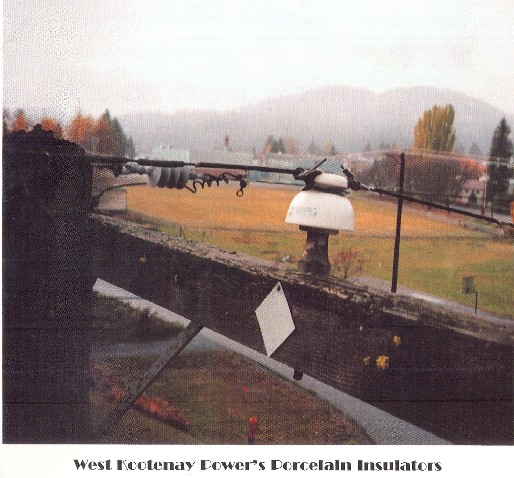
Cover Photo
Roofs were put on each structure to protect the line
from shorting out. The roofs were later removed as they proved to be
unnecessary. U-934 Imperial Porcelain was used on this line and U-935 on the
second line built a year later. The 20,000-volt transmission line was a
significant undertaking for this time period. The right-of-way went through
rugged terrain and with a change in elevation of about 2200 ft. It crosses the
Kootenay and Columbia Rivers with 600 and 1500-foot long spans. The project took
one year and one day to complete. 500 lights were shining in Rossland on July
15,1898.
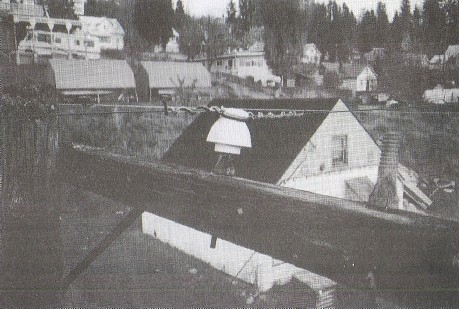
U-939 Fred Locke ink marked.
Less rare than the U-941B, but a real nice
style.
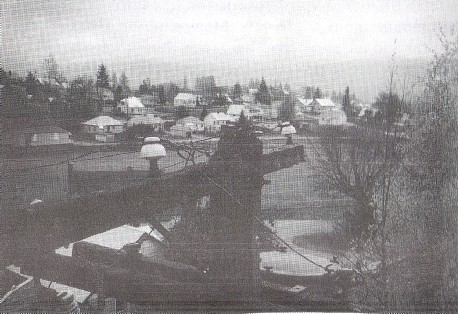
U-941B on the left and the U-939 on the right.
Taken in Rossland, B.C.
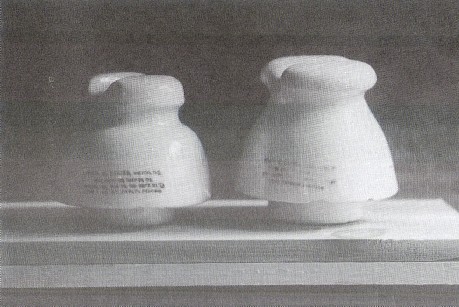
A couple of insulators that were salvaged:
U-941b on the left and U-939 on
the right.
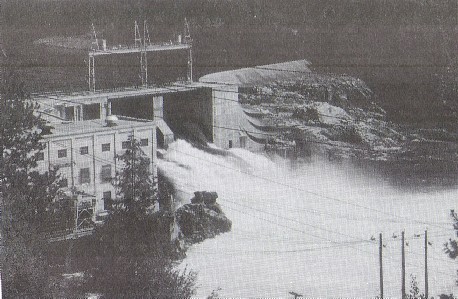
This is the Number One plant on the Kootenay River.
This site was where the
original plant was built in 1897.
The power house and dam has been rebuilt twice
since then.
Taken in Bonnington, B. C.
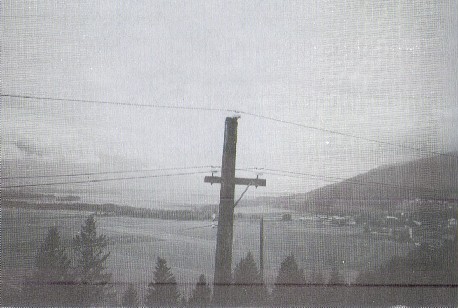
The original 20 kv line built from Bonnington to Rossland, B. C.
in 1897 was
insulated with the U-934. The insulators were later taken down
and re-used on
various distribution lines. This distribution line is in
Wynndel, B. C. There is
also a U-935 on top of this structure.
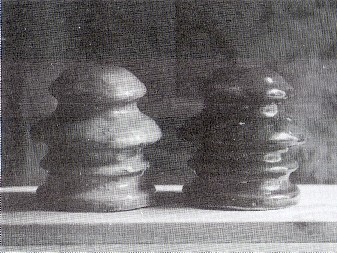
Two U-192A unmarked Fred Locke specimens
I found near Rossland, B. C.
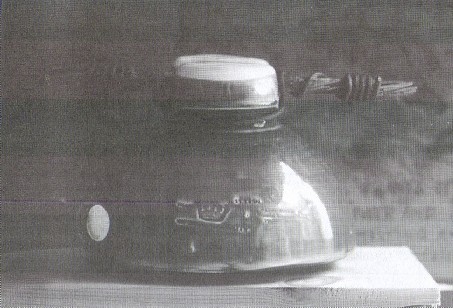
U-746 Imperial salvaged from West Kootenay
Power Line near Castle gar, B. C.
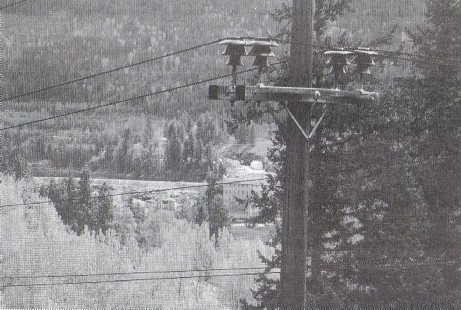
Fred Locke multiparts (M-4321) on a line near
Number Two Plant on the
Kootenay River.
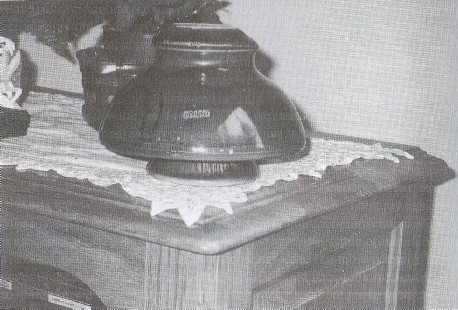
VICTOR marked M-2220 salvaged from a
West Kootenay power line.
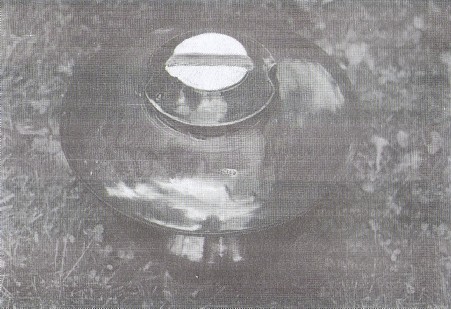
VICTOR marked M-4321 West Kootenay power insulator.
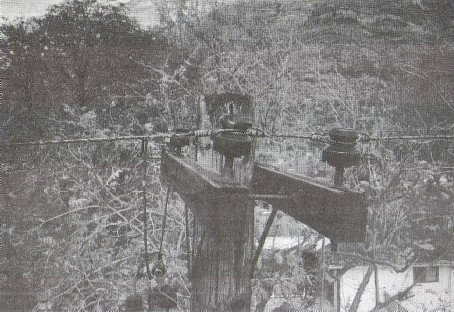
U-529 unmarked Fred Locke,
taken in B. C. near B. C.
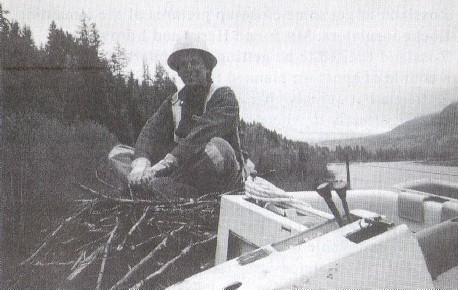
Hugh Barbour sitting in an osprey nest about 55 feet from the ground.
The
Kootenay River flows in the background. We moved this nest from
the old structure
onto a new platform. What environmentalists we are!!
Just in time for nesting
season!
The City of Rossland quickly grew due to gold fever and the lure of
quick riches. It was British Columbia's fourth largest city at 7,000. There were
42 saloons and 17 law firms during this boom. The streets of Rossland were
graced with the Fred Locke U-941B and U-939. I have never found a historic
photograph to support this claim but there are a handful of these beauties still
in service today in Rossland. These insulators would have been used and reused
from the original distribution circuits built in 1897.
West Kootenay Power has
a wealth of old porcelain still in service that has been salvaged from the first
20 and 60KV lines. These insulators include U-934, U-935 and U-746 Imperials
plus some early Victors like M-2220 and U-964. Other porcelain includes U-610
and M-4321 Fred Locke.
The Kootenays are a great place to be a porcelain
collector. You can still take pictures of 100 year old Imperial and Fred Locke
insulators. In October of 1998 I arranged to take a West Kootenay Power line
truck up to Rossland to get some close-up pictures of the remaining Locke
insulators. My friend Harry and I drove to Rossland excited to be getting this
opportunity. We had a couple of spots we planned to stop before we reached
Rossland but quickly changed our minds and ended up driving directly to where
the Fred Locke insulators were. Being able to get so close to take pictures was
great and we took two rolls of film in several locations. We were just feeling
lucky to see these rare insulators up close and in service. On the way home we
stopped in the old village of Tadanac near Trail, B.C.
We were able to get some
good shots of Locke U-529 that I had scouted out a month or so previously. We
also stopped between Trail and Castlegar to take some shots of a couple of U-964
Victors that are still in service. This was a full and rewarding day that Harry
and I talk about as one of our best insulator days.
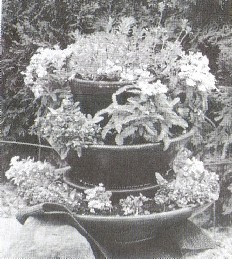
Hugh's mother made good use
of this M-4321 Fred Locke.
Other old mining communities like Greenwood and Pheonix were taken into
West Kootenay Power's service area early in the 1900's. The only U-196 ink
marked Fred Locke insulators known to exist came from the old Pheonix town site which is now totally gone. The Cascade Pass between Rossland and Grand Forks
still yields the odd U-192A unmarked Fred Locke if
you look long and hard. Hunting insulators in our
great mountainous and very wooded countryside is what I really enjoy about our
hobby. A great day, a hike, fresh air, history, and insulators.
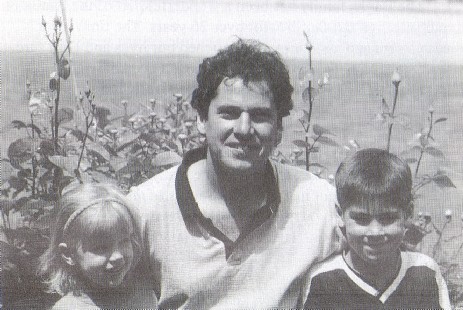
Hugh Barbour and his children Ashley and Nicholas.
| 